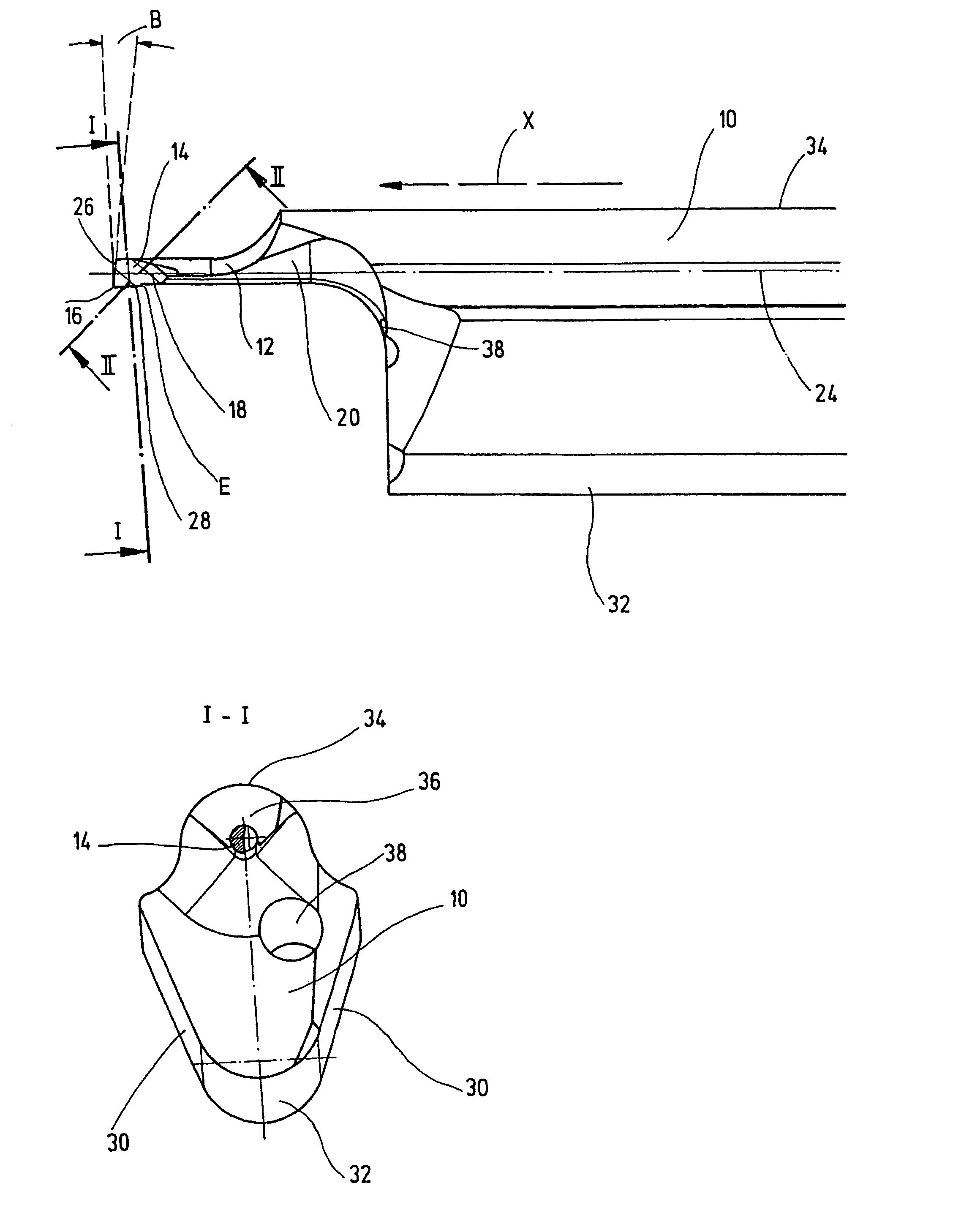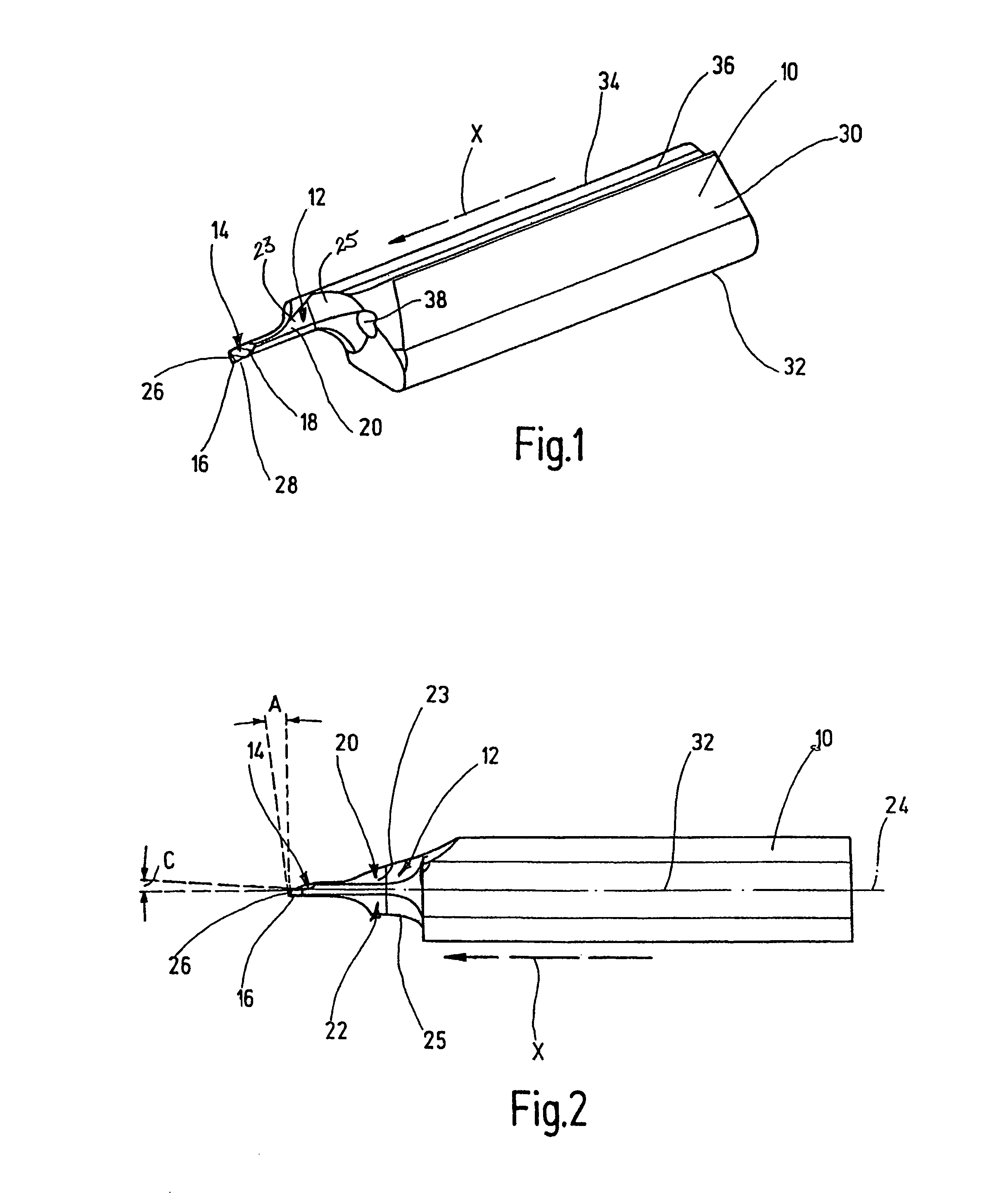Cutting tool
a cutting tool and cutting edge technology, applied in the field of cutting tools, can solve the problems of metal removal, inability to advance in this range of operation, and adjustment of the cutting edge, and achieve the effect of high quality standards
- Summary
- Abstract
- Description
- Claims
- Application Information
AI Technical Summary
Benefits of technology
Problems solved by technology
Method used
Image
Examples
Embodiment Construction
[0016]The cutting tool illustrated in the figures is used in particular for hollowing drill holes having a bore diameter less than 1 mm, preferably in the area of 0.7 mm. The cutting tool has a clamping component 10 for securing the tool in tool holder not shown. Use may be made, for example, of the tool holders as described in European Patent 0 385 280 issued to the applicant. The side of the clamping component 10 facing away from the tool holder is adjoined by a neck component 12 tapered in relation to the clamping component 10. The neck component 12 has integral with it, on its free end a cutting component 14 provided at its extremity with a cutting edge 16. Cutting edge 16 adjoins a face 18 of the cutting component 14 in the direction of the neck component 12. The direction of machining with the tool is indicated in FIGS. 1 to 3 by an arrow identified by an “X.”
[0017]As seen in FIG. 2 in particular, the neck component 12 has, extending along it transversely to the plane with the...
PUM
| Property | Measurement | Unit |
|---|---|---|
| Angle | aaaaa | aaaaa |
| Angle | aaaaa | aaaaa |
| Angle | aaaaa | aaaaa |
Abstract
Description
Claims
Application Information
 Login to View More
Login to View More - R&D
- Intellectual Property
- Life Sciences
- Materials
- Tech Scout
- Unparalleled Data Quality
- Higher Quality Content
- 60% Fewer Hallucinations
Browse by: Latest US Patents, China's latest patents, Technical Efficacy Thesaurus, Application Domain, Technology Topic, Popular Technical Reports.
© 2025 PatSnap. All rights reserved.Legal|Privacy policy|Modern Slavery Act Transparency Statement|Sitemap|About US| Contact US: help@patsnap.com



